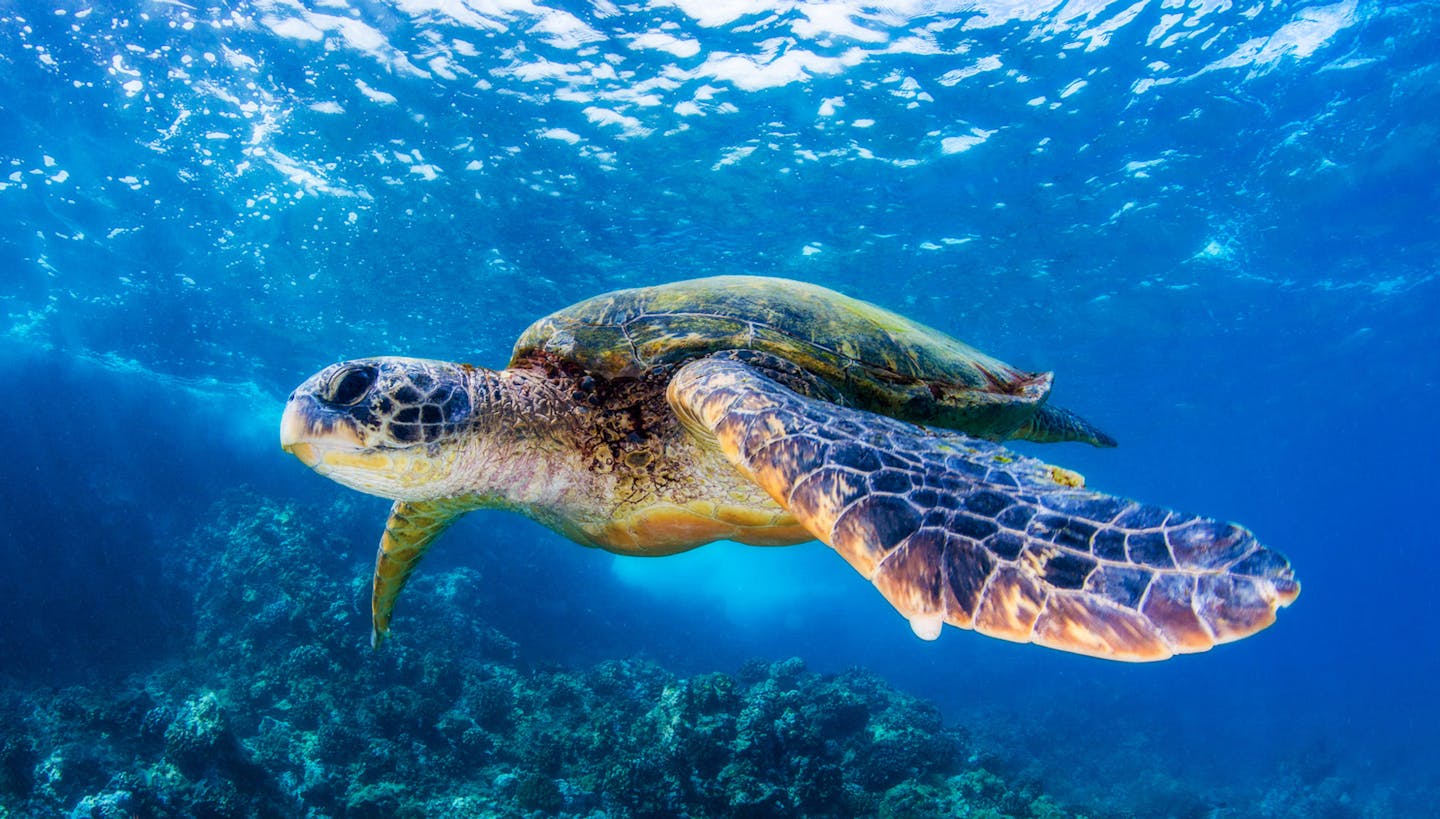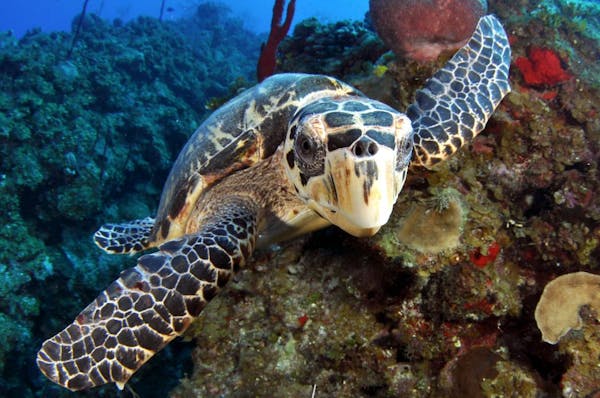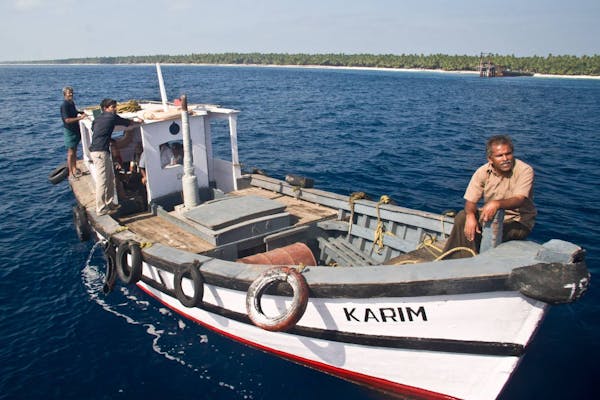Diving deep into the life of green sea turtles
- Nature Conservation
- Ocean Conservation
- Iconic Species
- Wildlife
- Reptiles
- Indomalaya Realm
- Indian Subcontinent
One Earth’s “Species of the Week” series highlights an iconic species that represents the unique biogeography of each of the 185 bioregions of the Earth.
Amidst the gentle sway of emerald seagrass and the whispering currents of subtropical and temperate waters, the green sea turtle (Chelonia mydas) roams.
Spanning regions of the Atlantic, Pacific, and Indian Oceans, green sea turtles serve as custodians of marine habitats worldwide. In North America alone, they inhabit inshore and nearshore environments, from the Gulf of Mexico to the Atlantic seaboard, and beyond.

Green sea turtles (Chelonia mydas) are the iconic species of the Central Indian Ocean Islands bioregion (IM1) located in the Indian Subcontinent subrealm of Indomalaya.
Distinctive design: Anatomy and appearance
Green sea turtles are the largest of all hard-shelled sea turtles, measuring 0.9 to 1.2 meters (3–4 ft) in length, with comparatively small heads. Their shells are dark brown with gray-olive hues, while the undersides are much lighter, tinged with shades of yellow-to-white.
Distinctive features on the head include a serrated beak on the lower jaw and two parallel rectangular scales or scutes between the eyes. The shell has five scutes on the midline plus four scutes on each side, making a total of thirteen.
Diet and role in marine health
Distinguished as the only herbivorous species among sea turtles, green sea turtles sustain themselves primarily on a diet of algae and seagrasses, with occasional forays into sponges, invertebrates, and discarded fish, especially during their first years into adulthood. This means that while they are omnivorous at a young age, they become herbivorous once they have acquired full body mass.
By grazing on seagrasses and algae, green sea turtles play a crucial role in maintaining the health of seagrass beds and coral reefs. This grazing helps promote the development of seagrass by preventing it from becoming overgrown, which in turn supports a diverse marine ecosystem by providing habitat and food for a variety of aquatic species.
Additionally, healthy seagrass beds function as carbon sinks, which are vital for mitigating climate change. As a keystone species within their ecosystem, green sea turtles contribute to the overall biodiversity and resilience of marine environments.
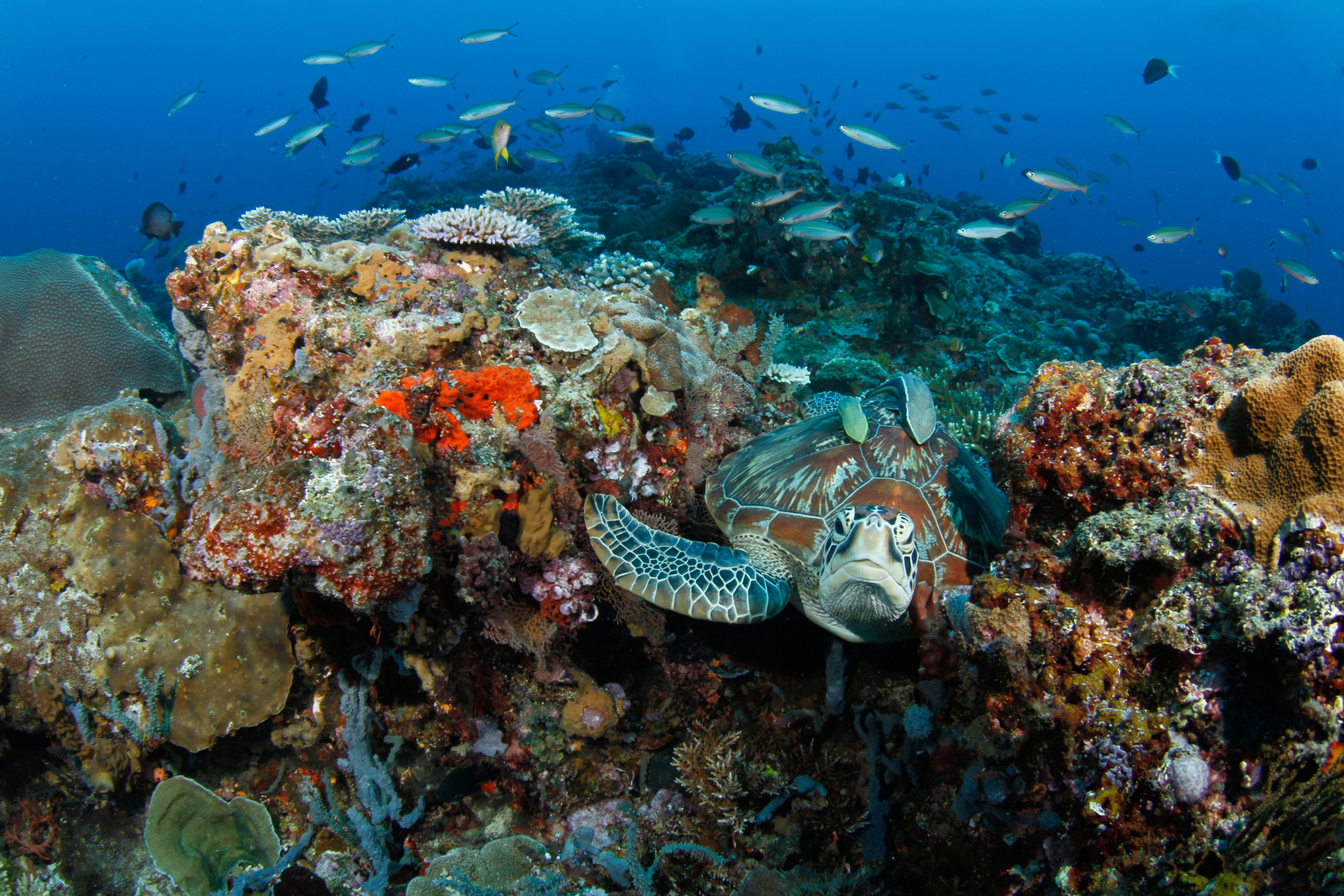
A green sea turtle resting in a tropical coral reef surrounded by fish. Image credit: © Divehive | Dreamstime
The dance of life: Reproduction and nesting
Green turtles, like all sea turtles, are creatures of the ocean that rely on periodic ventures to land for breeding and nesting. They undertake remarkable migrations spanning hundreds to thousands of kilometers between foraging grounds and nesting beaches, guided by an innate sense of navigation. Solitary and nocturnal nesters, they embark on cyclical journeys that encapsulate the stages of life, from hatchling to adult.
Their lifecycle intertwines with the intricate web of the ocean. Pelagic juveniles navigate offshore waters for many years before migrating to nearshore habitats that are familiar to them. Eventually, they mature into adulthood, and females prepare to lay eggs at the beach where they once hatched.
Longevity is a well-known characteristic of the green sea turtle, and individuals can live seventy years or more. Female green turtles reach maturity after 25 to 35 years, and from then on embark on reproductive migrations every two to five years. In the full moon of May or June, females walk on the beach, dig deep holes, and lay around 100 eggs. If the sandy nest is warm, it will produce females, and if it is cool, it will produce males.
Following a gestation period of about two months, hatchlings emerge and are guided by the luminous sea, shining under a full moon. As they swim under the waves and into the ocean waters, they register the smells of the waters and begin to ‘map’ out their whereabouts. Thus, two decades later, they will remember where they hatched and come back to lay their eggs..
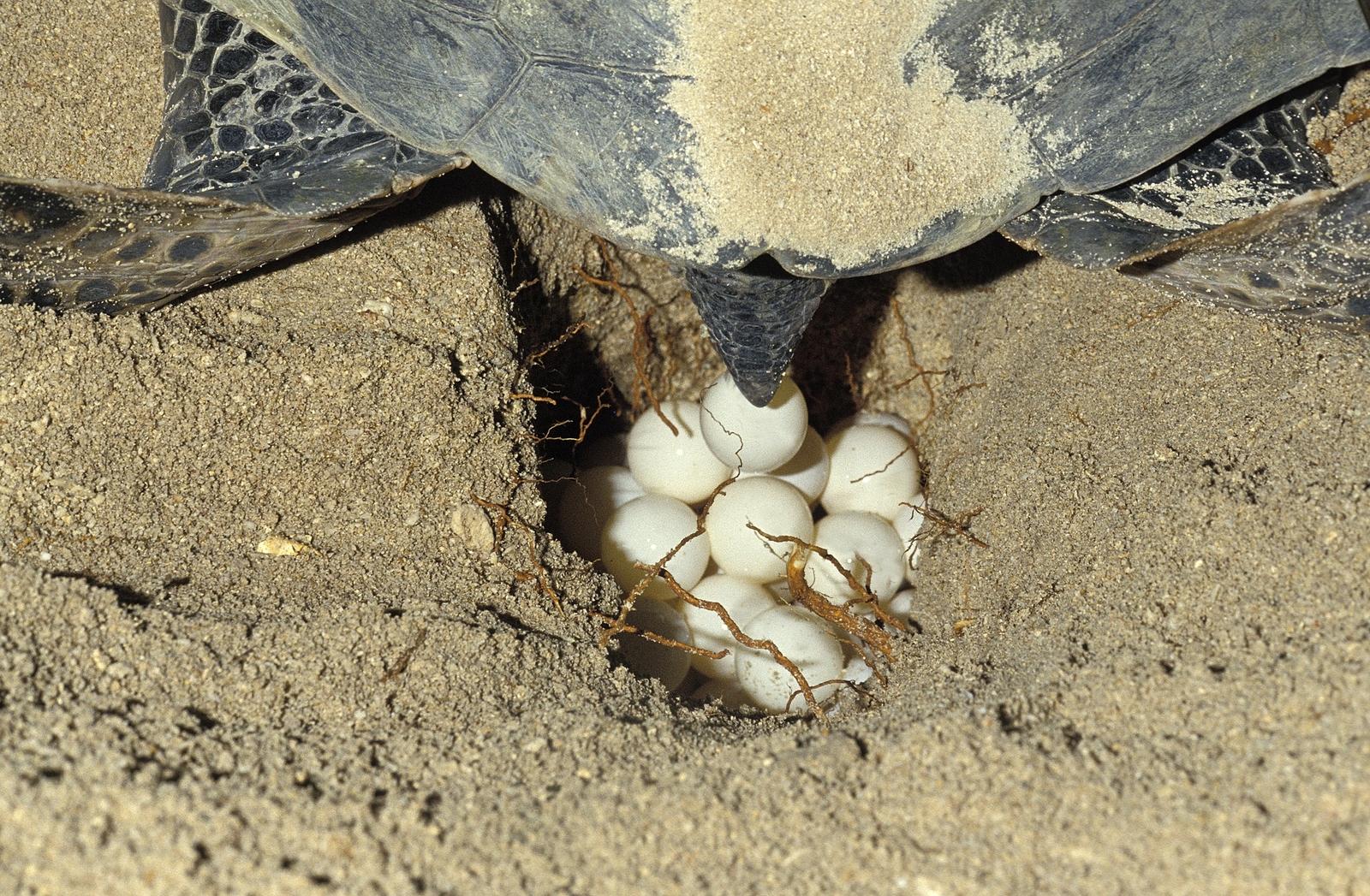
A female green sea turtle laying eggs in a nest on a beach in Malaysia. Image credit: © Slowmotiongli | Dreamstime
Importance in Indigenous cultures
In Indigenous cultures across the globe, the green sea turtle embodies the first land on which terrestrial creatures could live.
Among the Maya in the Yucatán Peninsula, the first green turtle appeared in the sky, in the constellation known as Orion, which they call Yax Ahk, literally meaning green turtle. In the early hours of July and August, Yax Ahk crowns the sky, coinciding with the time the hatchlings are heading into the water.
The Yax Ahk is sacred because its carapace is the land over the ocean waters where all terrestrial creatures live. The three central scutes on the shell are a reminder of the three stones of the hearth where the first fire was lit at the time of Creation. These hearth stones are still seen in every traditional Maya house.
The green sea turtle’s shell is also important to the Maya because the total number of scutes is thirteen, resonating with thirteen constellations. As such, it provides a clear map of how to divide a territory into the thirteen lordships. This array, active during the first decades of Spanish invasion in the sixteenth century, eventually succumbed, losing much of the traditional way of living in harmony with nature in the Yucatán Peninsula.
Addressing threats to survival
For the past decades, the green sea turtle has been besieged by threats that imperil its survival. From fishing gear that cuts through their ranging grounds to the direct harvest of turtles and eggs, human activities take a toll on these gentle guardians of the deep.
Loss and degradation of nesting habitat, vessel strikes, plastic pollution, climate change, and disease cast shadows upon their future, underscoring the urgent need for concerted conservation efforts.
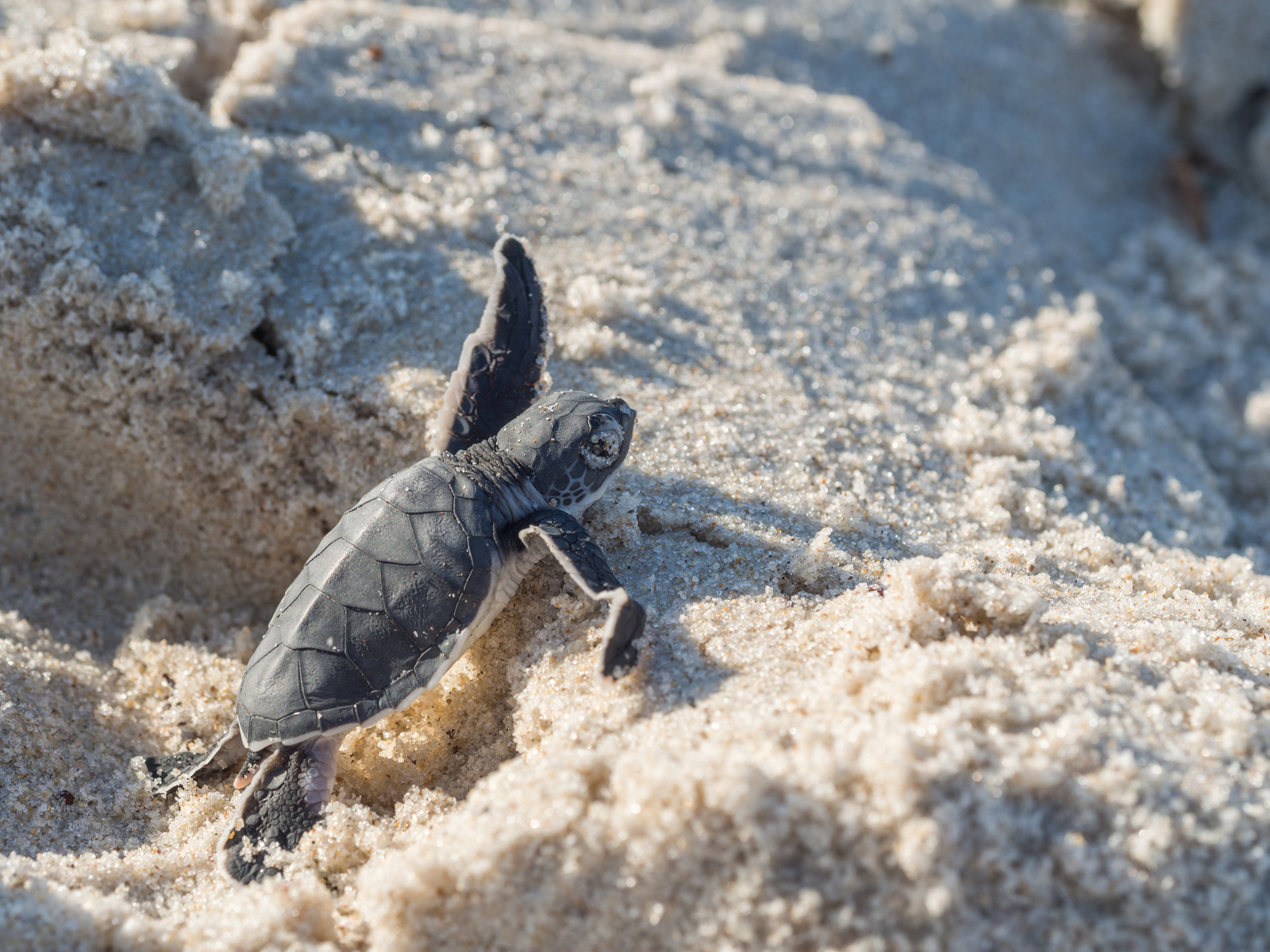
A newly hatched green sea turtle on their way to the ocean in Tanzania, Africa. Image Credit: © Sohadiszno | Dreamstime.com.
International efforts to safeguard the green sea turtle
Despite the myriad challenges confronting green sea turtles, collaborative initiatives spanning international borders strive to safeguard their habitats and mitigate the perils they face.
From the protection of hundreds of kilometers of nesting beaches to the implementation of sustainable fishing practices, conservation endeavors offer hope for the future of these magnificent creatures.
Support Nature Conservation